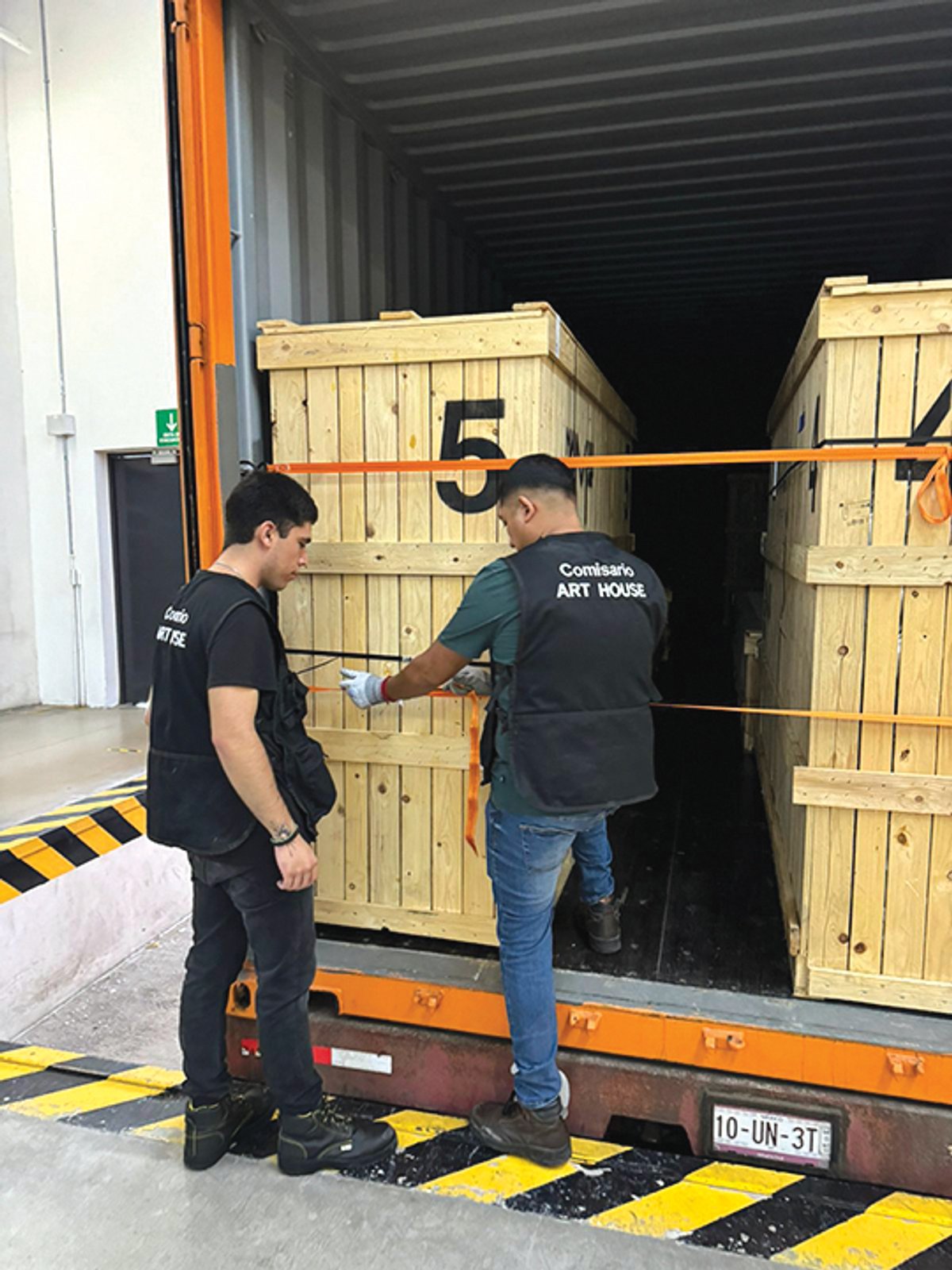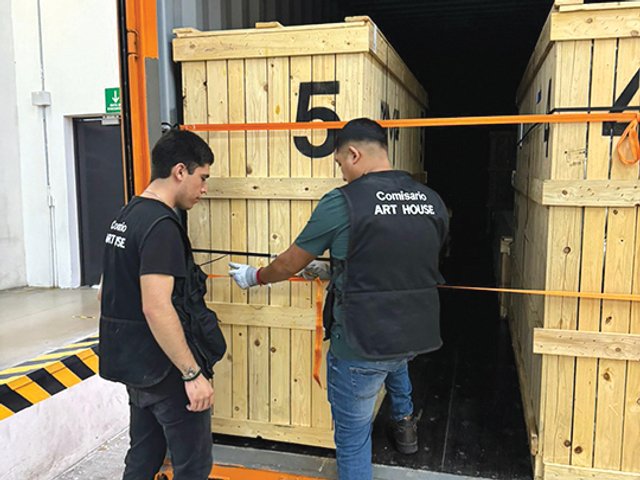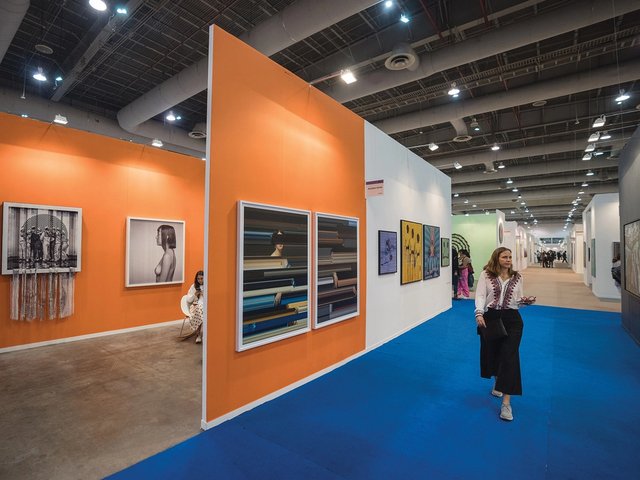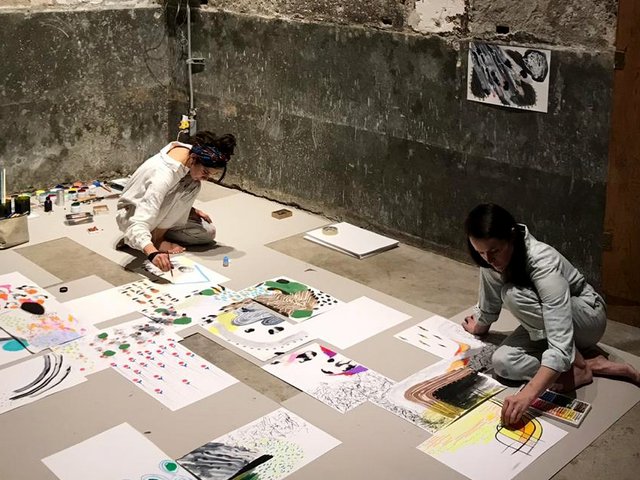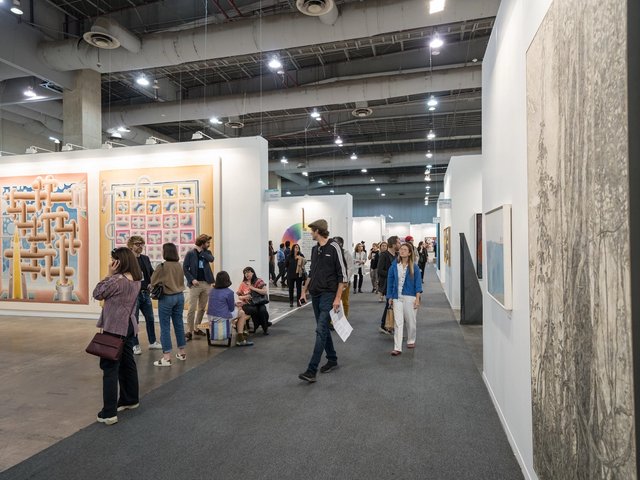Mexico City’s contemporary art scene is growing rapidly. The number of museums is increasing—under Andrés Manuel López Obrador’s administration, several new public spaces opened in the capital. The number of private galleries—and, seemingly, collectors—is also on the up. With them comes the need for ancillary services, and one of the most crucial during an art fair week is art handling.
While museums and established galleries have tended to rely on in-house teams to pack and transport art, there is, according to the art handler Yamil Hazouri, a growing trend, especially among the smaller, independent galleries, to outsource the work.
Hazouri, who set up Comisario Art House, a boutique art handler based in Mexico City, has been in the business for five years. He had been working for a bigger company when he decided to set up on his own with his partner. Almost immediately, they found themselves in the middle of Covid-19.
“It wasn’t something we’d planned for, but suddenly everyone was at home—or at one of their homes—and wanted something nice to look at,” Hazouri says. “It meant we were able to work and get established, and when restrictions were lifted we had learned enough to move forward.”
The company now employs a team of eight and one of Hazouri’s biggest passions, aside from the contemporary art the firm specialises in, is ensuring that his team benefits from regular training. “There’s no real recognition of the role of art handler in Mexico,” he says. “There’s little to no time devoted to the subject at any of the art schools, so many artists don’t even understand what we do until they need us.” He adds: “We have devised our own training to cover knowledge, technical ability and of course safety—because some of the works are very heavy and there is a lot of lifting involved. “
Hazouri’s clients range from small independents to larger spaces such as the Banco de México and the Museo Universitario Arte Contemporáneo, as well as hotels and private collectors. “Our biggest job was moving a collection of over 2,000 pieces across the country,” he says. “We wrapped every piece and moved it in two trucks. The whole thing took two months.”
Such blockbuster jobs mean Hazouri can continue to invest in the business; he also has an eye on the wider art ecosystem in the country—and beyond. The growing number of galleries is, he says, a positive thing “because it means art can be more accessible to more people”.


